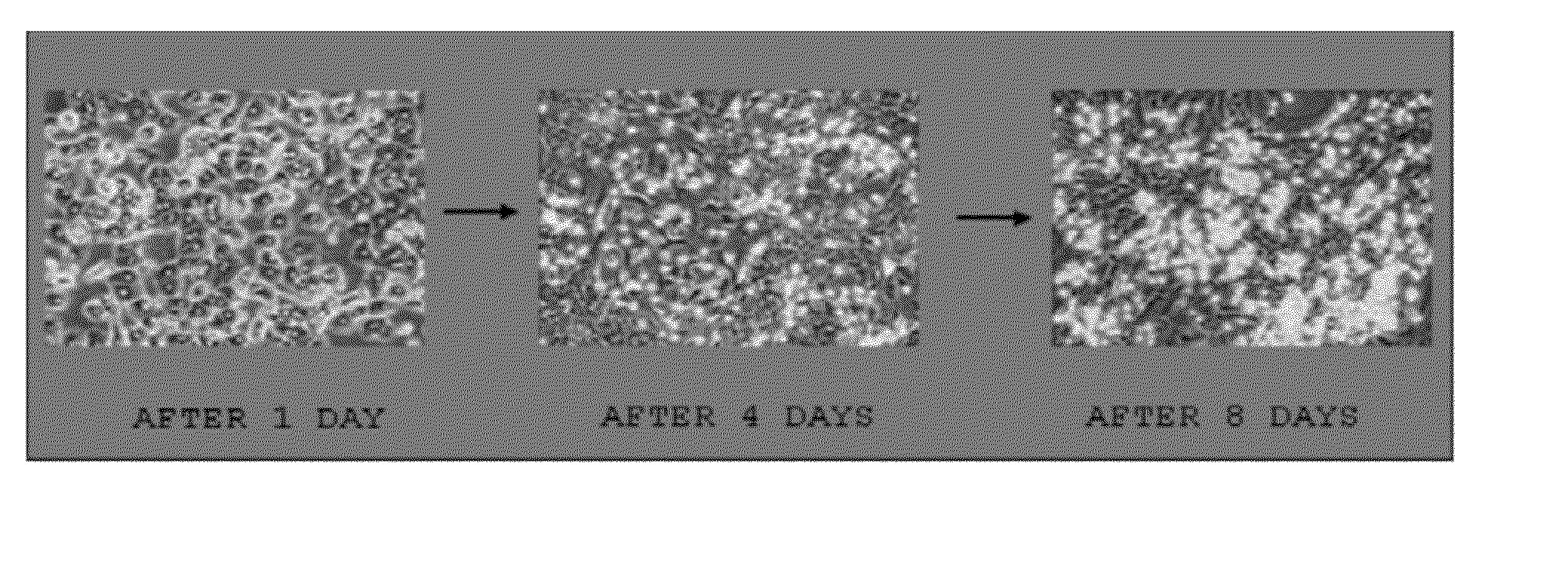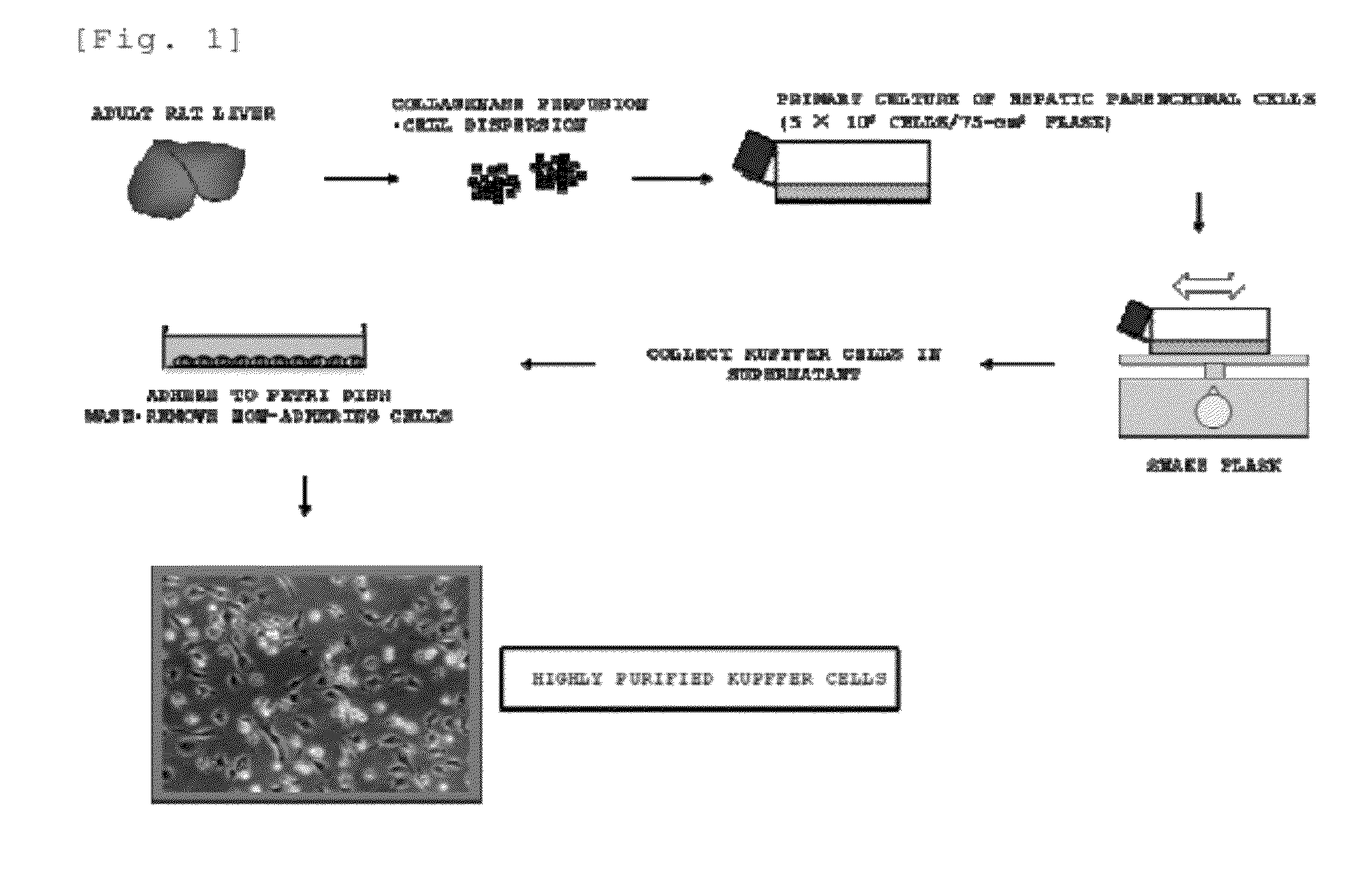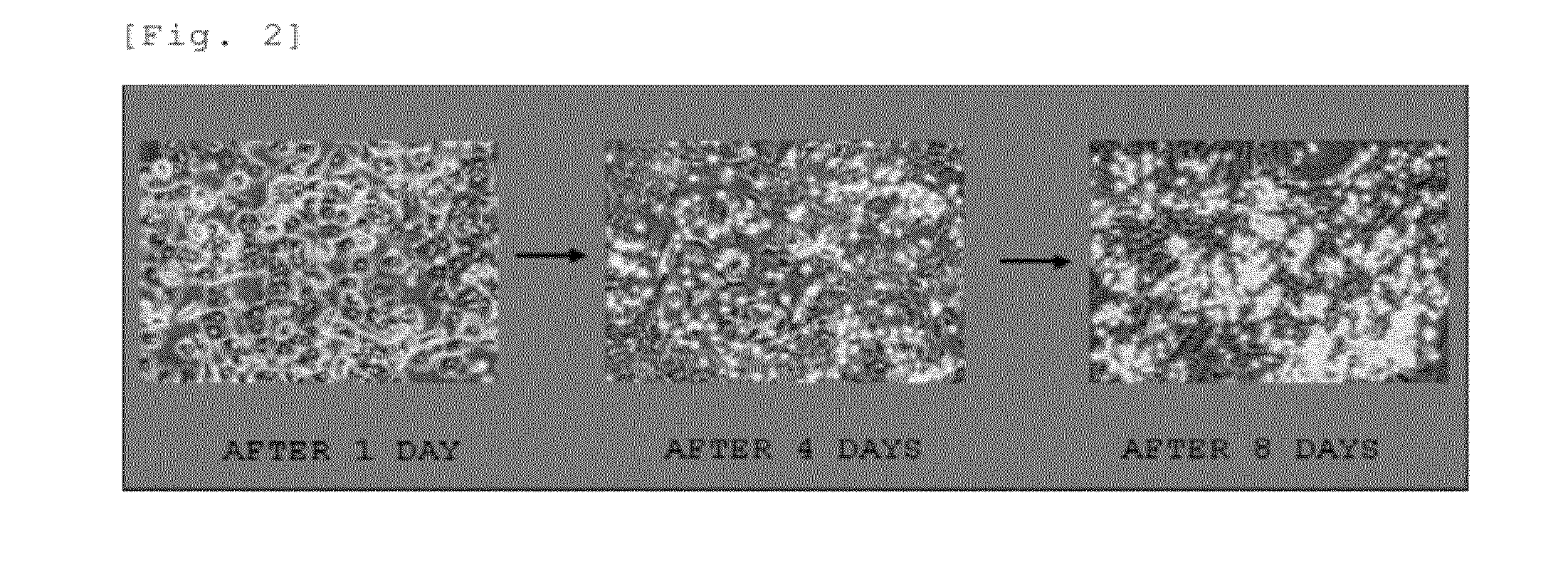Efficient proliferation method for a kupffer cell and use thereof
- Summary
- Abstract
- Description
- Claims
- Application Information
AI Technical Summary
Benefits of technology
Problems solved by technology
Method used
Image
Examples
example 1
Production of Kupffer Cells from Rat Live r
[0124]In the same manner as in the method described in the known document (Non Patent Literature 4), the livers of adult male SD rats (10 to 15 weeks old) were perfused with a collagenase solution, and digested liver tissues were removed.
[0125]Each of the removed liver tissues was minced. To this, a collagenase solution was added, and a liver cell mixture suspension was obtained by pipetting. A low-speed centrifugation operation (50×g for 1 minute) at 4° C. and a washing operation with a medium (which is a Dulbecco's modified Eagle's medium (high glucose type) supplemented with fetal bovine serum (10%), bovine insulin (10 μg / ml), and 2-mercaptoethanol (0.1 mM)) (hereinbelow, unless otherwise specifically stated, a medium of the same kind was used) were repeated three times on the obtained mixture suspension. A hepatic parenchymal cell fraction that was a precipitate obtained there from was suspended in a medium, and 5×106 cells were seeded ...
example 2
Production of Kupffer Cells from Cattle Liver
[0141]By the same production method as for the above-described rat Kupffer cells, hepatic parenchymal cells were separated from the livers of calves, and 5×106 of the cells were seeded into each tissue culture flask (bottom area: 75 cm2) for primary culture. In this primary culture, the hepatic parenchymal cells became absent substantially at week 1 to day 10. A fibroblast-like cell layer was formed at day 8 to week 2. Spherical macrophage-like cells actively proliferated on the layer (FIG. 8). In other words, at day 8 to week 2 after the primary culture was started, a mixed culture system including the fibroblast-like cells and the macrophage-like cells was formed in the tissue culture flask.
[0142]In the same manner as for the rat, cells were selected and collected on the basis for the adherence to the plastic dish (FIG. 9). The collected cells showed quite a similar morphology to that of a macrophage. Almost all the cells were strongly ...
example 3
Primary Culture of Mouse liver Cells, and Immortalization of Kupffer Cells
[0149]In the same manner as for the rat, hepatic parenchymal cell fractions were obtained from C57BL / 6 mice (male, 7 weeks old). Each of the fractions was seeded into a tissue culture flask (bottom area: 25 cm2). The medium used was the same as that for the rat. In this primary culture, the hepatic parenchymal cells became absent substantially at day 5 to day 7. A fibroblast-like cell layer was formed at day 7 to day 14. Spherical macrophage-like cells actively proliferated on the layer (FIG. 14).
[0150]In the same manner as in the cell immortalization method described in the known documents (Non Patent Literatures 7, 8), the cells were infected with a retrovirus vector containing a human oncogene c-myc and a neomycin resistance gene from day 11 after the culturing consecutively for 3 days (FIG. 15A). After the infection, the cells were returned to a normal medium, and the culturing was continued using a tissue...
PUM
| Property | Measurement | Unit |
|---|---|---|
| Time | aaaaa | aaaaa |
| Fraction | aaaaa | aaaaa |
| Concentration | aaaaa | aaaaa |
Abstract
Description
Claims
Application Information
 Login to View More
Login to View More - R&D
- Intellectual Property
- Life Sciences
- Materials
- Tech Scout
- Unparalleled Data Quality
- Higher Quality Content
- 60% Fewer Hallucinations
Browse by: Latest US Patents, China's latest patents, Technical Efficacy Thesaurus, Application Domain, Technology Topic, Popular Technical Reports.
© 2025 PatSnap. All rights reserved.Legal|Privacy policy|Modern Slavery Act Transparency Statement|Sitemap|About US| Contact US: help@patsnap.com



